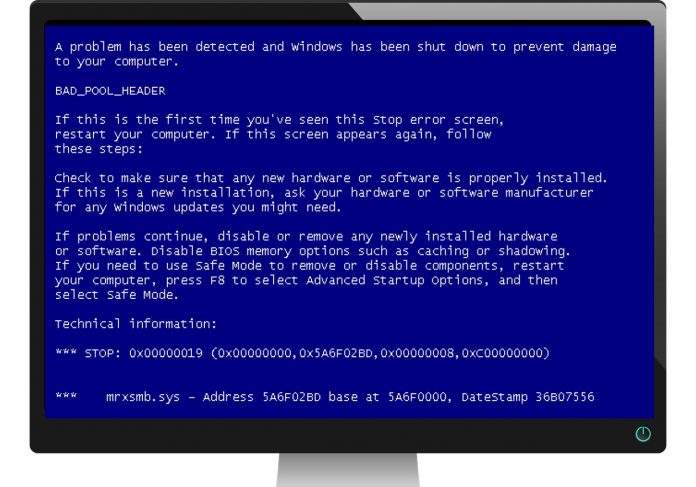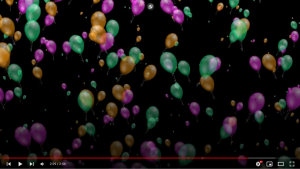Mistakes can sneak into your digital signage content quite easily, especially when you’re freshly starting out. A message may appear right to you who has written it, but it confuses the viewer and isn’t as easy to grasp as you thought. Then an ad might appear stunning and highly engaging at first, but fails to meet expectations and you’re left confused why your efforts don’t pay off.
If it makes you feel any better, know that you’re not alone and it’s normal to make mistakes in your digital signage content. Of course, that’s acceptable as long as you learn from your mistakes! With each mistake uncovered, your next attempt will get stronger.
So let’s start uncovering!
1. Poor content quality
There are many ways digital signage content can miss the mark in terms of quality. Of course, there is the obvious issue of having low resolution images and videos. But the more common issue is the content quality in terms of comprehension and perception. An overly busy screen, mixed messaging, or messaging that just doesn’t make sense can cause a lot of damage. You can fix this issue with a quick test by asking for feedback, or taking a step back and putting yourself in the shoes of someone faced with your message for the first time.
2. Outdated content
There’s nothing exciting about past content. If information is out of date, it’s useless. This can damage other content you display, too, by implying all of your content is of equally low use to the viewer. It insinuates no one really cares enough to keep the display updated with relevant information. If the creators didn’t, why should the viewers bother to pay attention to it?
3. Inappropriate content length
Determining the ideal length of a content piece is an essential part of making a powerful content rotation. How much time will a viewer spend in front of your display? Are they just walking by your storefront? That’s a short amount of time. So create a message which can be understood in under 5 seconds.
A display in the seating area of a fast food restaurant? A customer spends some time there, so freely include a longer message. The viewer isn’t going anywhere until they have finished eating. Thus, they have sufficient time to understand it. Getting the length of your content wrong is one of the most common mistakes in digital signage content—be it an image, video, or an app. It ruins a lot of potential for engagement!
4. Unfitting content density
There is such a thing as too much content on your display, as well as too little! It all depends on where the display is and who sees it. In a waiting room, it’s fine to have a dense campaign with three sections of information. The viewer has time to look at it. In this instance, you already have their attention and simple, eye-catching messaging is not needed. On the other hand, if there is very little content, they won’t be engaged or bother to look twice.
The exact opposite happens outdoors when your display is fighting to catch as much attention to it as possible. It needs to be direct, simple, and short! Here, content density needs to be low.
5. Matching content to the wrong screen size
Much like with content density, display size is a relative thing. Often, replacing a display with an alternative that’s a few inches wider doesn’t contribute to much. You’ll achieve a greater impact by assigning the right content type to the appropriate display size.
If the content is compact, the viewer will need to be closer to the screen to properly read it. A storefront display, for instance, might not always have people walking by closely. In this case, you would do better to consider either simplifying your message or getting a bigger display. When it comes to calculating the appropriate viewing distance, you are faced with many and sometimes opposing suggestions. The best guideline is to test the content yourself and see if the content density and display size are appropriate for viewing at a certain distance.
For interactive purposes such as feedback, to name a clear example, it is unlikely you’ll need a big touchscreen display. Instead, a simple tablet will do the trick, as the viewer is right in front of it and has to answer a question with a few options.
6. Choosing the wrong font
If your message contains more than three words, font choice can make or break it. Balancing the visual aesthetic of a font with its readability can be tricky. The longer the text, the simpler the font should be. Sans-Serif fonts are great for understanding at a quick glance because they have no additional visual features. Meanwhile, Serif fonts are better for super short messages which won’t suffer from the additional decoration on the character.
Take a look at an in-depth guide on fonts for your digital signage campaigns!
7. Featuring unexciting products
Digital signage applications are great for showcasing individual products. They can deliver that modern visual impact which attracts attention as well as invite the viewer to make a purchase. However, it’s important to choose the right product to feature on such promotions. Of course, you might be pushing a specific product for a reason, but when it comes to highlighting products in general, put your best foot forward.
At this point, we set foot into the analytical part of your business and look into how you best might combine digital signage with the business decisions and knowledge you possess.
8. Poor audience targeting
Your content is built for an audience. If you don’t create the content with the audience in mind, it will most probably fail to meet your expectations because it failed the audience’s expectations way before that. Content creators often load up high quality content onto displays in hopes of impressing a viewer. But if this content contains information which is not important, relatable, or interesting, it will not impress anyone.
Consider what your viewer wants to see. The challenge here is not so much in avoiding irrelevant content, but rather establishing what it is your viewers find to be important information and then deliver it. A retail business should feature products which are sold the most, for instance. In another context, a coffee shop at an airport should display departure times. A hotel lobby should display local points of interest, and so on.
9. Underestimating digital signage software
Digital signage software used to be a luxury which simply made scheduling content easier. Today it’s so much more. Scheduling content is still a vital element, yes. But digital signage software also lets you manage a sea of content more easily, display it to the appropriate locations automatically, get notified of any issue or inconsistency, remotely manage your displays, make content creation easier, and even generate content from scratch!
In short, if you’re not using digital signage software to the full extend, you’re lagging behind the competition!











